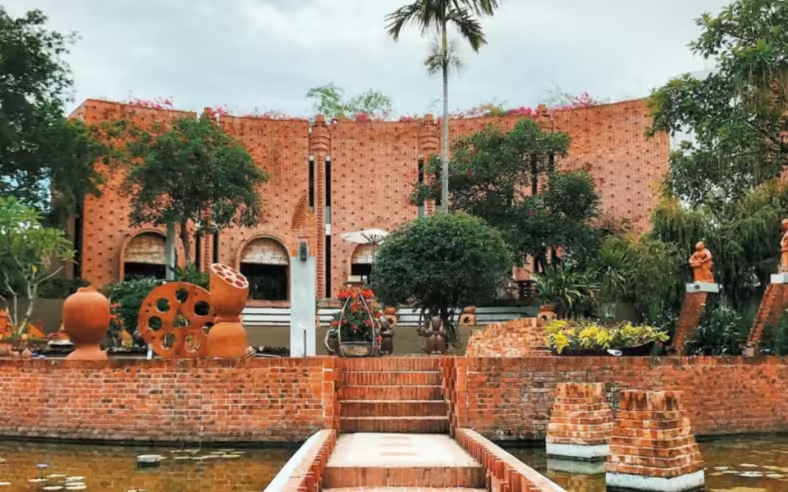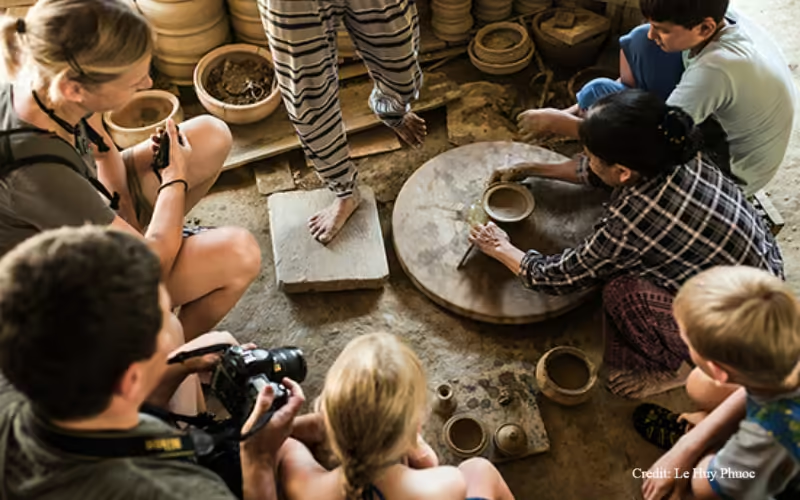
Thanh Ha Pottery Village: Your Ultimate Guide to a 500-Year-Old Craft Village+ Videos
In this article, we’re excited to show you Thanh Ha Pottery Village near Hoi An. Learn about the history of this traditional craft, and see the beautiful pottery. We’ll give you tips on how to get there, what to expect, and fun pottery workshops you can join. Whether you love art or just want a special experience, this guide will help you enjoy your visit to this lovely village!
What makes Thanh Ha Village special?
Experiences in Thanh Ha
Directions & transport
Entrance fee
What makes Thanh Ha Pottery Village special?
One of the must-visit villages in Hoi An is Thanh Ha Pottery Village, and it has a charm that sets it apart from other villages in the area. Let’s dive in and explore what makes this village special!
A legacy of pottery-making that spans 500 years
Thanh Ha Pottery Village was founded in the 16th century, and according to historical records, the first settlers were people from Thanh Hoa, which is about 650 kilometers north of Hoi An. They brought their pottery-making skills with them to build the village. Initially, they focused on crafting everyday pottery items like pots, bowls, plates, and teapots to serve the central region of Vietnam.
The village thrived the most during the 17th and 18th centuries, when Hoi An was a bustling trading port, attracting merchants from Japan, China, and the West. During this time, in addition to everyday products, Thanh Ha also began producing containers for export goods.
Unique traditional pottery-making techniques
One of the most distinctive aspects of Thanh Ha Pottery is its traditional and nearly unique production methods that have been preserved for centuries. The primary material used is brown clay sourced from the Thu Bon River. The artisans here maintain a completely manual production process, shaping the pottery by hand or using a foot-powered wheel, without the use of molds.
What truly sets Thanh Ha apart is the intuitive way the artisans fire their pottery. They don’t rely on temperature measuring tools; instead, they gauge the heat and timing based on their experience and the sound of the fire. Another fascinating aspect is that the absence of glaze and chemical additives results in a diverse range of colors in the finished pieces, such as golden red, brick red, brown, pink, and black.
What exciting experiences await you in Thanh Ha Pottery Village?

Watch the artisans craft pottery
When you visit this village, you’ll see how the local artisans craft beautiful pottery from clay. These skilled craftsmen often start their work early in the morning and continue until late in the evening, working alone right in front of their homes, surrounded by rows of their handmade creations.
Learn to make pottery
Not only can you watch the artisans in action, but you can also get hands-on and make your own pottery with their help. You’ll learn how to shape your creations by hand and add color to your pieces, and you can take home your masterpiece when the workshop is over. It’s a fun experience, and there’s a small fee to participate.
Visit Thanh Ha Terracotta Park
In the village, you’ll find a spot known as Thanh Ha Terracotta Park, which showcases the products of the local artisans. The park also features pottery from other famous villages in Vietnam, like Bat Trang. One of the highlights of this place is its impressive displays of iconic architectural works from Vietnam and even some of the world’s wonders. It’s a great place to explore and appreciate the art of pottery
Taking a boat ride on the Thu Bồn River
After exploring Thanh Ha Pottery Village, you can head to the Thu Bon River and take a boat ride back to Hoi An Ancient Town. This delightful experience allows you to take in the scenic countryside on both sides of the river and get a glimpse of the local life along the way.
How to get to Thanh Ha Pottery Village from Hoi An Ancient Town

Thanh Ha Pottery Village is located about 4 kilometers west of Hoi An’s Ancient Town, and getting there is a breeze. You can reach the village by taxi, Grab, motorbike, bicycle, or even on foot. Just like other villages in the area, we recommend biking for the best experience. Renting a bike is easy, and you’ll find plenty of rental shops around the Old Town.
Is there an entrance fee for Thanh Ha Pottery Village
The entrance fee for Thanh Ha Pottery Village is about 35,000 VND (about $1.50) for adults and 15,000 VND (about $0.65) for children. With this ticket, you can explore the village and watch the artisans at work. If you want to visit the Thanh Ha Terracotta Park, you’ll need a separate ticket—50,000 VND (around $2.15) for adults and 30,000 VND (about $1.30) for kids. For pottery-making classes, you can contact the local workshops directly for pricing details.
- https://www.youtube.com/@VivaVNOfficial
- https://www.facebook.com/vivavnofficial2024
- https://www.pinterest.com/vivavnofficial/
© 2025 VivaVN. All rights reserved.


Leave a Reply